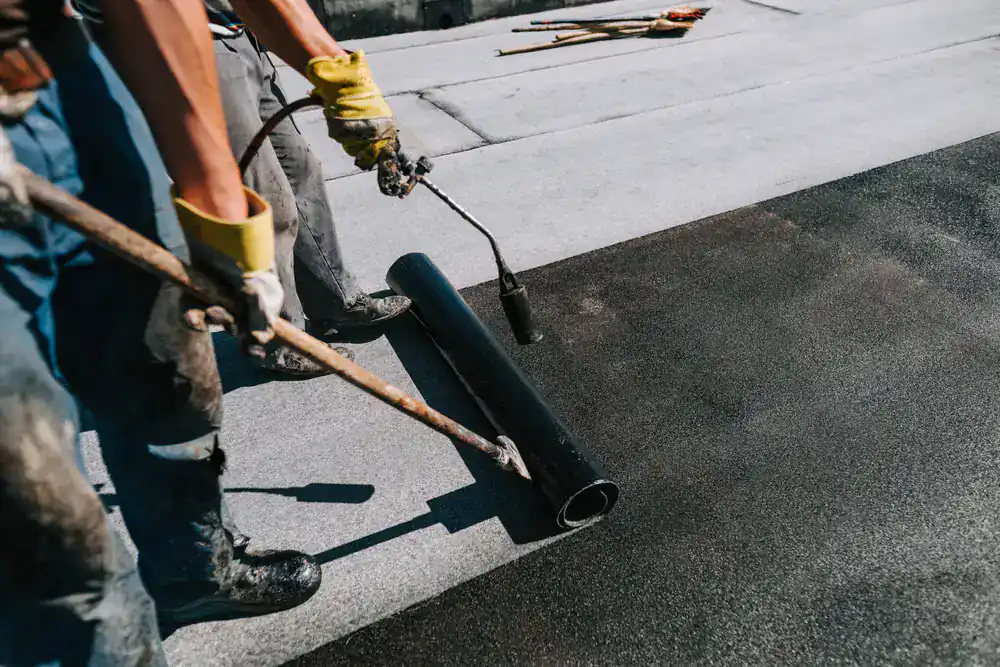
Hear from Our Customers
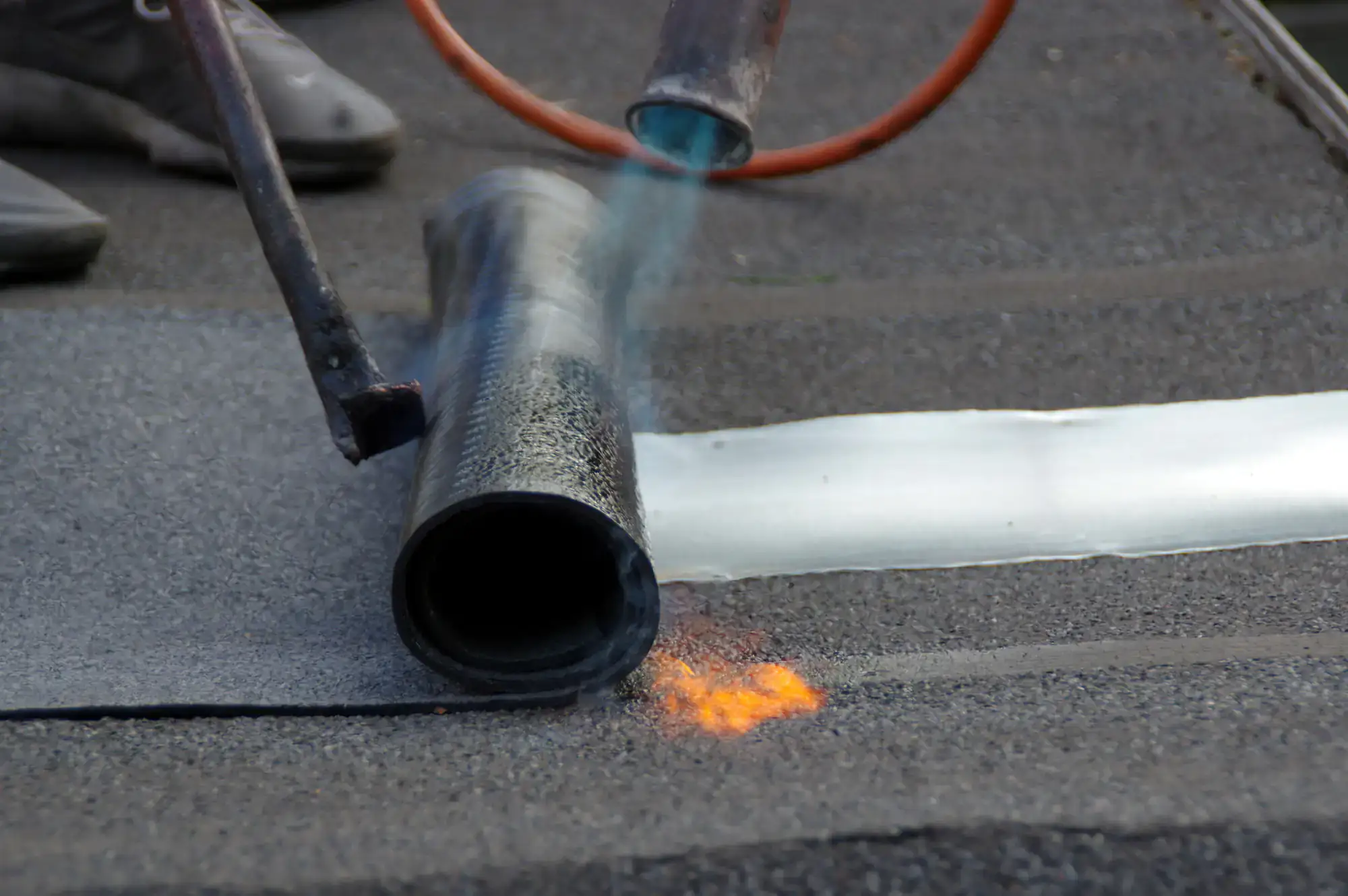
Your flat roof stops being a problem the day we finish. No more emergency buckets during storms. No more ceiling stains or mold concerns. No more wondering if this winter’s snow load will finally cause that leak you’ve been dreading.
You get a modified bitumen membrane that’s literally melted into place, creating one continuous waterproof layer across your entire roof. The material expands and contracts with temperature changes without cracking. It handles Long Island’s harsh weather—from summer heat waves to winter freeze-thaw cycles—without breaking down.
Most importantly, you sleep better knowing your property is protected. That’s what proper torch down installation delivers: real peace of mind, not just a temporary fix.
We’ve been the go-to flat roof specialist in Wainscott since day one. We’re not the roofing company that shows up, slaps on a quick fix, and disappears when problems arise.
We’re family-owned and operated, which means we actually care about getting it right the first time. When you call us for torch down roofing, you’re getting contractors who understand Wainscott’s specific challenges—the coastal weather, the older buildings, the unique drainage issues that come with this area.
Our approach is straightforward: honest assessments, quality materials, and installation done right. We’ve seen too many property owners get burned by contractors who cut corners on torch down work, leaving them with bigger problems down the road.
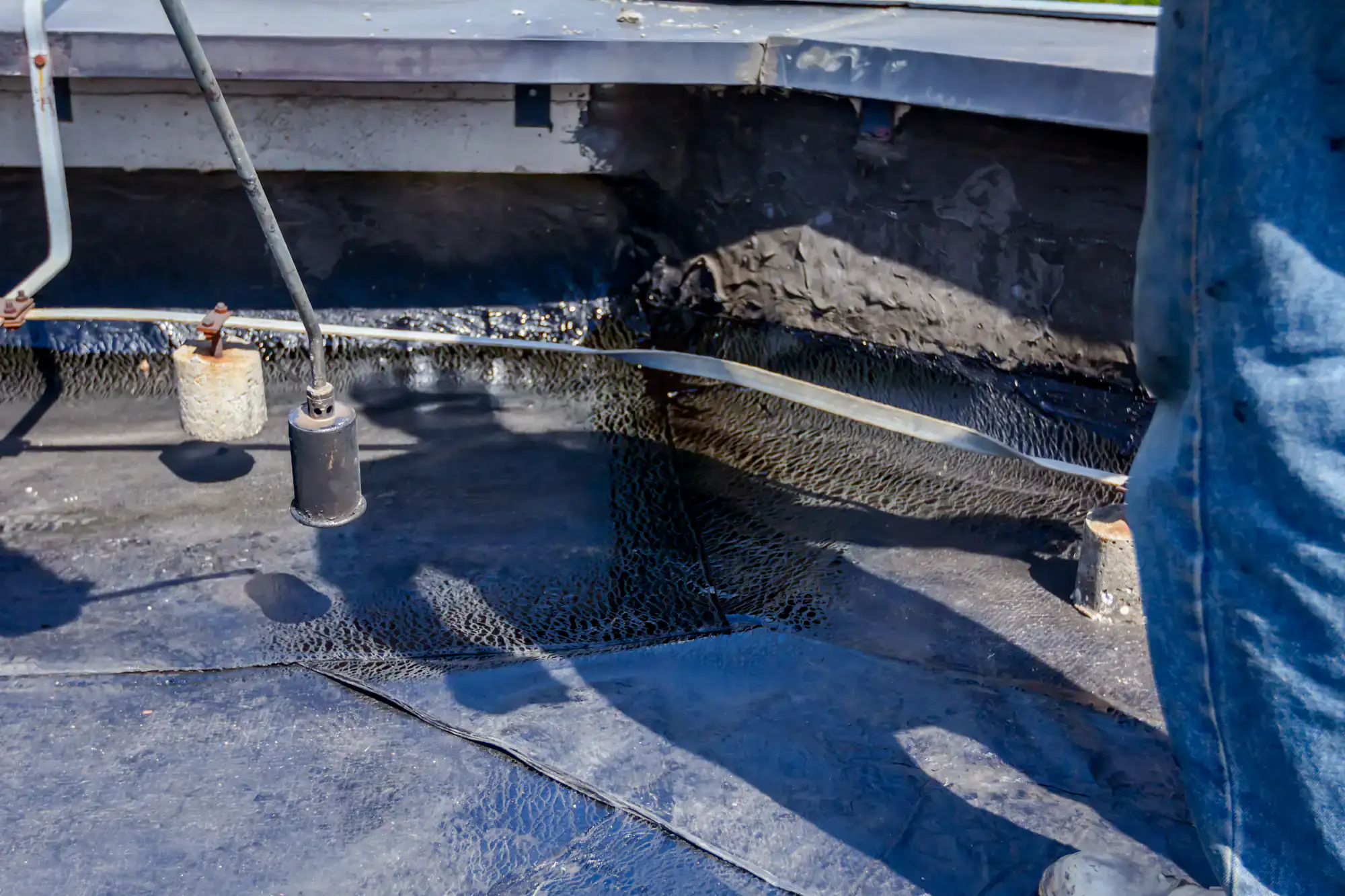
First, we assess your existing roof condition and determine if we can install over the current surface or if removal is necessary. We prepare the roof deck, secure metal flashing around edges, and apply primer where needed.
Next comes the technical part that separates professionals from amateurs. We roll out sheets of modified bitumen membrane and use a propane torch to heat the material to the exact temperature needed for proper adhesion. This isn’t guesswork—it requires experience to avoid overheating (which makes the material brittle) or underheating (which prevents proper sealing).
We carefully melt the seams between sheets to create one continuous waterproof layer. The torch application process literally fuses the material to your roof deck and to itself, eliminating the weak points where most flat roof leaks start. Finally, we inspect every seam and penetration to ensure complete waterproof integrity.
The result is a roof system that’s essentially shrink-wrapped to your building—no gaps, no weak spots, no places for water to find its way in.
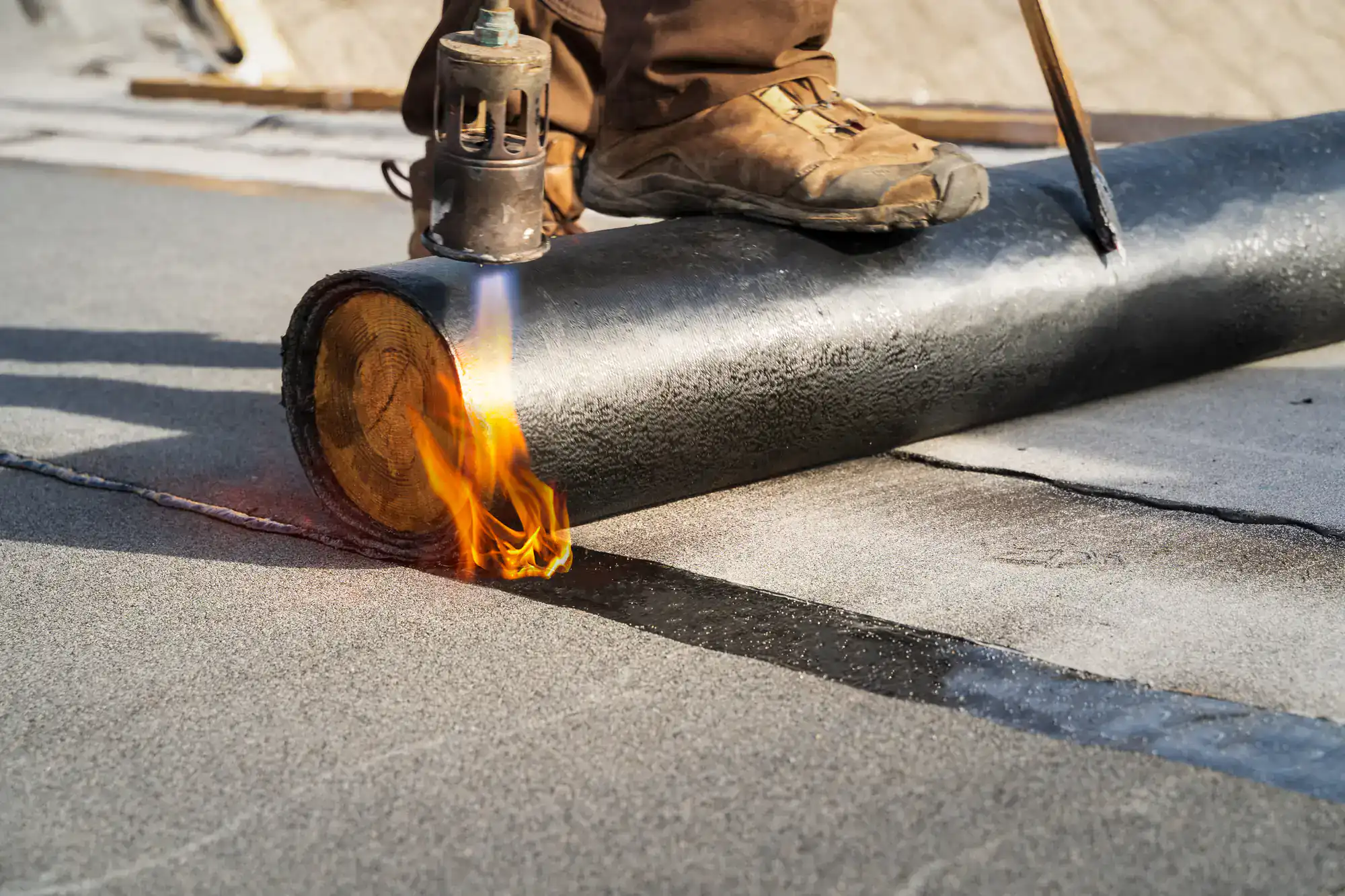
Ready to get started?
Our torch down installations use APP modified bitumen—a plastic-modified asphalt that stays flexible in both hot and cold weather. This isn’t the cheap material some contractors use. We’re talking about membrane that’s designed specifically for Long Island’s climate extremes.
You can choose between two-layer and three-layer systems depending on your building’s needs and budget. Three-layer systems include a granulated cap sheet that provides extra UV protection and fire resistance—particularly valuable for commercial properties or buildings with high foot traffic on the roof.
In Wainscott, we see a lot of older buildings with unique roof configurations. Our experience with these properties means we know how to handle the challenges that come with irregular shapes, multiple penetrations, and drainage issues that weren’t properly addressed in original construction. We don’t just install roofing—we solve the underlying problems that cause flat roof failures in the first place.
Every installation includes proper flashing around penetrations, careful attention to drainage patterns, and a thorough final inspection to ensure complete waterproof integrity.
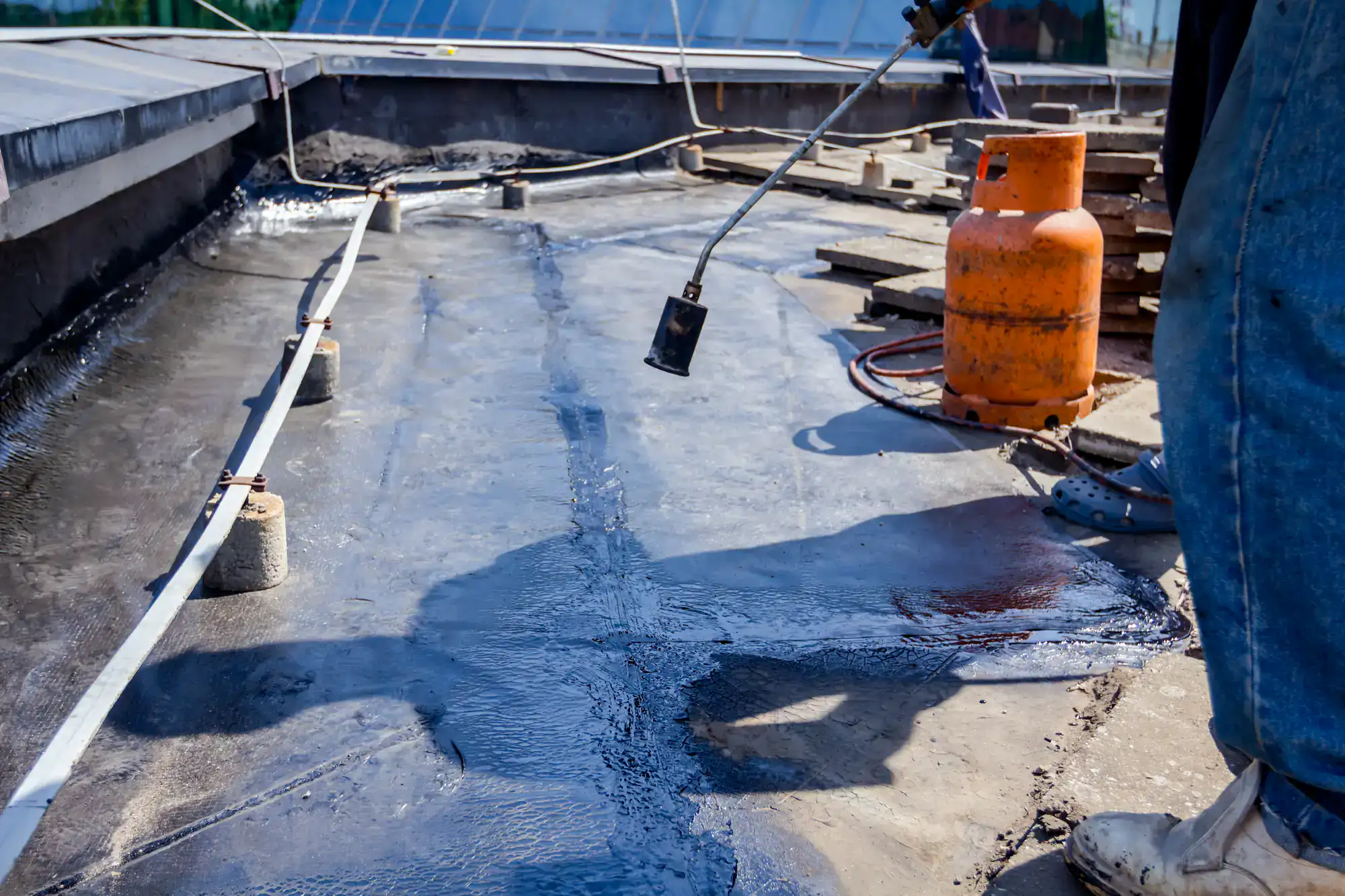
With proper installation, torch down roofing typically lasts 15-20 years in our climate, and we’ve seen well-maintained systems go even longer. The key factors are quality installation and regular maintenance.
Long Island’s weather is tough on flat roofs—we get everything from hurricane-force winds to heavy snow loads to intense summer heat. Modified bitumen handles these extremes better than most flat roof materials because it’s designed to expand and contract without cracking. The torch application creates a monolithic membrane that doesn’t have the seam failures you see with other systems.
That said, longevity depends heavily on installation quality. Poor torch technique—overheating or underheating the material—can cut the lifespan in half. This is why choosing experienced contractors matters more for torch down than almost any other roofing system.
APP (atactic polypropylene) uses plastic modifiers and requires torch application for proper installation. SBS (styrene butadiene styrene) uses rubber modifiers and can be installed with torch, cold adhesive, or hot mop methods.
For torch down applications, we typically recommend APP because it’s specifically engineered for heat welding. The plastic modifiers give it excellent heat resistance and UV protection. It also maintains flexibility across a wider temperature range, which is important in our climate where we can see 100-degree swings from winter to summer.
SBS is a good material, but when clients specifically want torch down installation, APP gives better long-term performance. The torch application process works more predictably with APP, and the final membrane tends to be more durable against punctures and tears.
When installed by experienced professionals with proper equipment and safety protocols, torch down roofing is safe. The key is working with contractors who understand fire safety and have the right insurance coverage.
We use professional-grade torches with precise temperature control, not the cheap equipment some contractors use. Our crews are trained in fire safety protocols, and we always have fire extinguishers and water sources readily available during installation. We also check local fire regulations before starting any job.
The safety concerns you might have heard about typically involve inexperienced contractors or improper techniques. Some areas have restrictions on torch applications—for example, NYC banned torch down on wood structures after too many fires from poor installation practices. We’re fully familiar with local codes and safety requirements.
It depends on the condition and type of your existing roof. We can often install over one layer of existing roofing if the deck is sound and there are no moisture issues.
Before making this decision, we do a thorough inspection to check for soft spots, moisture damage, or structural issues. If your existing roof is holding water or has significant deterioration, we’ll recommend complete removal and replacement. Installing over damaged roofing just traps problems underneath.
When we can install over existing roofing, it saves you money on tear-off and disposal costs. However, we never compromise on quality to save a few dollars. If the existing roof needs to come off for proper installation, we’ll tell you upfront. The goal is a roof system that lasts, not one that looks good for a couple of years then fails.
Torch down typically costs more upfront than basic EPDM rubber roofing but less than premium systems like TPO or PVC. The real value comes from longevity and low maintenance requirements.
Pricing depends on factors like roof size, complexity, whether we’re installing over existing roofing or doing complete replacement, and which system you choose (two-layer vs. three-layer). We provide detailed written estimates that break down all costs so you know exactly what you’re paying for.
When you factor in the 15-20 year lifespan and minimal maintenance needs, torch down often provides better value than cheaper alternatives that need frequent repairs or earlier replacement. We’ve seen too many property owners choose the lowest bid only to spend more in the long run dealing with problems from poor installation or inferior materials.
Torch down roofing requires minimal maintenance compared to other flat roof systems. The main requirements are keeping drains clear, removing debris, and having periodic inspections to catch small issues before they become big problems.
We recommend annual inspections, especially after severe weather. During these inspections, we check for any signs of membrane damage, ensure all seams are intact, and verify that drainage systems are working properly. Most torch down roofs go years without needing any repairs.
The most common maintenance issue we see is ponding water from clogged drains or settling that changes the roof’s drainage patterns. These problems are easily addressed if caught early. The seamless nature of torch down installation means you don’t have the seam maintenance issues that plague other flat roof systems.